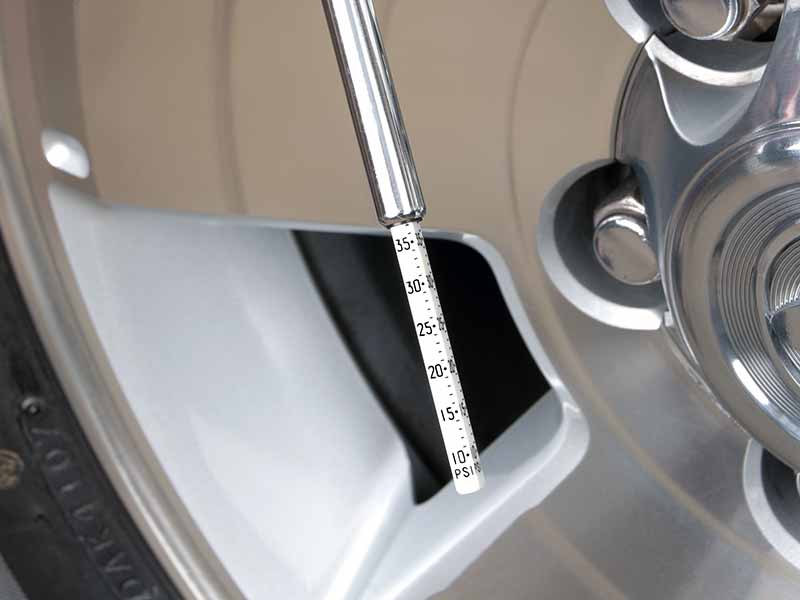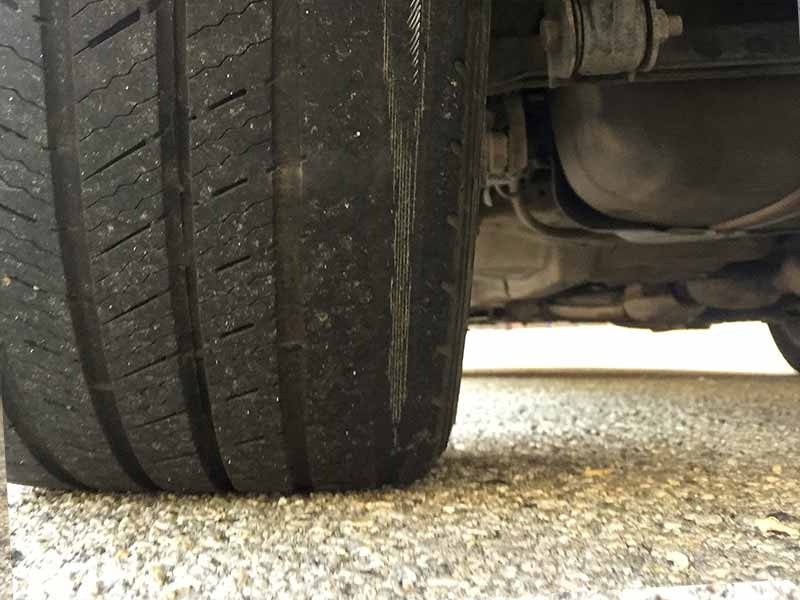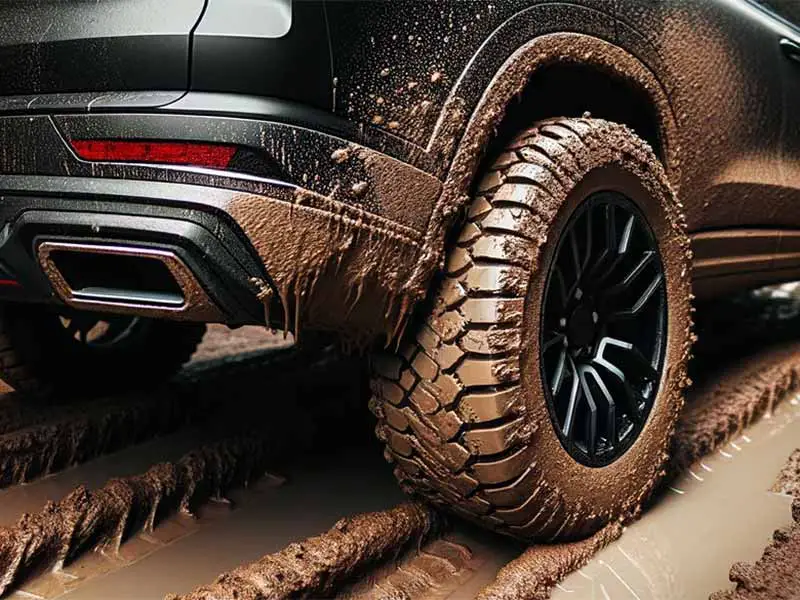Just got those shiny new tires installed and can’t help but wonder if they need a different touch when it comes to air pressure? You’re not alone. Delve into the nuances of how tire size variations might shake up those pressure norms you once knew. Let’s demystify the air within those fresh treads.
Does Tire Pressure Change With Different Tires?
Tires from different manufacturers with the same specifications typically have the same tire pressure requirements. However, if you switch to a different tire size, you may need to adjust the air pressure accordingly.
In this article, we’ll explore the intricacies of how different tire sizes affect tire pressure, the significance of monitoring systems, the implications of incorrect tire pressure, and top-notch tips for maintaining the right pressure.
Let’s take a closer look.
How Different Tire Sizes Affect Tire Pressure
Bigger Tires: What Happens to Pressure?
When you get bigger tires for your car or truck, it can change the tire pressure you need. Think of tires as containers for air. A bigger container can hold more stuff, right? So, a bigger tire might need more air to feel just right. But it’s not just about size. The shape and design of the tire can also make a difference.
Wider Tires and Their Needs
Wider tires are like wider shoes. They touch the ground more. Because they have more area touching the road, they might need a different tire pressure than narrower ones. Sometimes they might need more air, and sometimes less. It really depends on the tire and the car.
Finding the Right Pressure for Different Tires
Even if you change your tires to a different size or shape, there’s a way to know the best pressure:
- Check the New Tire: Sometimes, the tire itself has a recommended tire pressure written on its side. This is a good place to start.
- Ask the Tire Shop: When you buy new tires, the people at the tire shop can tell you the right pressure. They know a lot about different types of tires and how they work with different cars and trucks.
- Test and Adjust: After you put on new tires, drive a little. See how they feel. If something feels off, you might need to check and adjust the pressure. Remember to use a tire pressure gauge!

Tire Pressure Monitoring Systems (TPMS)
A Tire Pressure Monitoring System, or TPMS for short, is a helpful tool in your car or truck. Its job is to watch the air pressure in your tires. If the air inside any tire gets too low or too high, TPMS will tell you with a warning light on your dashboard. It’s like a friend keeping an eye on your tires for you!
Why is TPMS Useful?
- Safety Alert: If there’s a problem with tire pressure, TPMS gives you a heads up. It’s an early warning system, so you can fix the problem before it gets worse.
- Saves Money: If your tires have the right air pressure, they can last longer, and your car can use less fuel. So, TPMS can help you save money in the long run.
- Peace of Mind: Knowing that there’s a system in your car checking the tire pressure can make you feel safer and more relaxed when driving.
How TPMS Works with Different Tires
Your car’s TPMS is designed to work with the original tires your car came with. But what if you change those tires?
- New Tires: If you get new tires, TPMS should still work. But it’s a good idea to check the tire pressure yourself too, especially right after getting new tires.
- Aftermarket Tires: If you get aftermarket tires (those different from the originals), TPMS can still be your helpful friend. But remember, the best pressure for these tires might be different. Always use a gauge to double-check.

Maintaining Correct Air Pressure
The amount of air in your tires isn’t just about a smooth drive. It’s also about how much money you spend on gas and how long your tires last. Here’s how these things are connected:
Why Correct Air Pressure Saves You Money on Gas
- Smooth Ride: When tires have the right amount of air, they roll smoothly on the road. A smooth ride means your car doesn’t have to work as hard.
- Less Drag: If tires are low on air, they can become squishy. Squishy tires create more drag, making the car use more fuel.
- Even Wear: Tires with the correct air pressure wear out evenly. If they wear out evenly, they can work better for a longer time, helping your car use fuel efficiently.
Making Tires Last Longer with Right Air Pressure
- Avoiding Quick Wear: Tires that are too full or not full enough can wear out faster. Imagine walking in shoes that don’t fit; they’d wear out quickly!
- Protecting the Inside: Tires are made of many parts. Keeping the right air pressure protects these parts, so the tire stays strong and lasts longer.
Checking and Adjusting Air Pressure for Best Results
- Regular Checks: Even if your car feels okay, check the tire pressure from time to time. Things can change without you noticing.
- Morning Time is Best: The best time to check tire pressure is in the morning when it’s cool. When tires get hot from driving or the sun, the air inside expands. Checking in the morning gives you the most accurate number.
- Use a Reliable Gauge: Make sure you use a good tire pressure gauge. It’s a small tool, but it’s crucial to get the right reading.

Effects of Incorrect Tire Pressure
When tires have too much air, more than they should, we call them “over-inflated.” This isn’t good, and here’s why:
- Less Grip: An over-inflated tire doesn’t touch the road as it should. Only the middle part of the tire might touch the road, which means less grip and more chances of sliding.
- Easy to Damage: A tire with maximum tire pressure is like a balloon that’s too full. It can get damaged easily, especially if you hit a pothole or a sharp thing on the road.
- Uneven Wear: The middle part of the tire wears out faster because that’s the only part touching the road. This means you might need new tires sooner than you think.
The Risks of Too Little Air: Under-Inflated Tires
Tires with not enough air are called “under-inflated.” This also has problems:
- More Drag: Under-inflated tires are squishy. They create more drag, making the car work harder and use more fuel.
- Overheating: Without the correct air pressure, tires can get too hot. Hot tires can break or even explode.
- Quick Wear: The edges of the tire wear out faster because they’re doing all the work. This shortens tire life.
How Incorrect Air Pressure Affects Your Car
- Fuel Economy: The right air pressure helps your car use fuel efficiently. If it’s wrong, you’ll need more gas, which means spending more money.
- Tire Life: Tires last longer when they have the correct air pressure. If it’s not right, they wear out faster, and you’ll need to replace them sooner.
- Vehicle Performance: Your car drives better with the right tire pressure. It turns, stops, and accelerates the way it should. Incorrect pressure can make driving feel hard and unsafe.

Craftsman V20 Inflator
Tips for Maintaining Correct Tire Pressure
- Stay Consistent: It’s a good idea to check the air pressure in all four tires regularly. Just like you might check your mailbox every day, make it a habit to check your tires.
- Spotting Changes: By checking often, you can spot changes before they become big problems. This means you can keep each of your four tires happy and safe.
The Front and Rear Tires: A Separate Story
- Different Jobs, Different Needs: As we’ve learned, the front and rear tires might have different jobs. Because of this, they might need different amounts of air.
- Checking Separately: When you’re checking and adjusting the air, remember to treat the front and rear tires as separate teams. Think about what each pair needs and adjust the air pressure accordingly.
Using the Right Tool: The Tire Pressure Gauge
- Why It Matters: A tire pressure gauge is a small tool, but it’s very important. It tells you how much air is inside your tires. Think of it as a thermometer for your tires.
- Getting Accurate Numbers: To make sure your tires have the correct air pressure, you need to know the exact amount of air inside. Guessing isn’t good enough. The tire pressure gauge gives you numbers you can trust.
- Easy to Use: Don’t worry, using a tire pressure gauge is easy. Simply connect it to the valve on your tire, and it will show you the air pressure.
Remembering the Basics
- Regular Checks: Even if everything feels fine, it’s good to check the air pressure from time to time.
- Morning Time: The best time to check is in the morning when it’s cool. This gives you the most accurate reading.
- Ask for Help: If you’re not sure about something, it’s okay to ask. A friend, a mechanic, or someone at a tire shop can help.
Resources
Below are some links you may find helpful when learning about tires
- How to find your vehicle’s recommended tire pressure – Firestone
- Tire pressure checker: Righting the pressure in your new tires – 4WheelParts
Final Thoughts
Different tire sizes and types indeed require varied pressure levels, and with systems like TPMS, we can be vigilant about maintaining it. The key takeaways? Always ensure you have the correct air pressure, monitor regularly using a reliable gauge, and remember, the health of your vehicle largely relies on those four rings beneath.
Good luck and happy motoring.





